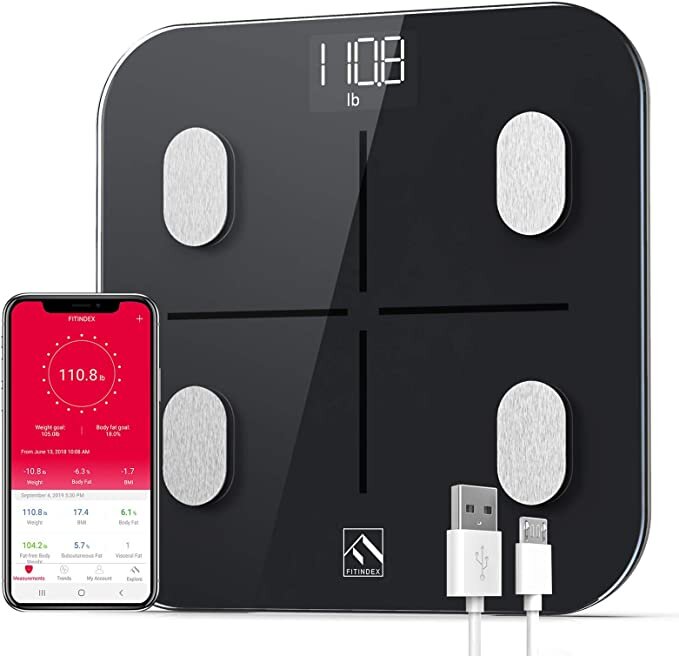Getting Started
The best foundation to beginning your journey towards weight loss is understanding the what, why and how behind our bodies burning fat, along with the process of monitoring our progress. This is what we call Body Composition Analysis which is how our personalized plans begin. See below to read the considerations and information we assess throughout your journey.
WHY MONITOR BODY COMPOSITION?
Body composition monitoring gives you an insight into key health indicators that will enable you to monitor the impact of changes to your lifestyle:
See the impact of a change in diet on the body to make sure you are dieting a healthy way
Fine-tune your fitness program by monitoring progress of muscle mass and Basal Metabolic Rate
Monitor the level of visceral fat, which has been linked as a possible risk factor for developing Type 2 diabetes a factor in heart disease.
Set a target for your physique and monitor your progress towards it.
HOW DOES A BODY COMPOSITION MONITOR WORK?
Body Composition Monitors calculate your body composition using Bio-electrical Impedance Analysis (BIA). Safe, low-level electrical signals are passed through the body via the footpads on the monitor platform. It is easy for the signal to flow through fluids in the muscle and other body tissues but it meets resistance as it passes through body fat, as fat contains little fluid.
This resistance is called impedance. The impedance readings are then entered into medically researched mathematical formulas to calculate your body composition. Some monitors are also equipped with an athlete mode for adults with athletic body types: this would be a person involved in intense physical activity of approximately 10 hours per week with a resting heart rate of 60 beats per minute or less. Individuals who have been an athlete for a number of years but currently exercises less than 10 hours per week should also use athletic mode. Otherwise, activity levels are rated on a scale from 1 (sedentary) to 3 (active).
THE BEST TIME TO MONITOR BODY COMPOSITION:
Your body water levels naturally fluctuate throughout the day and night. Any significant changes in body water may affect your body composition readings; for example, the body tends to be dehydrated after a long night sleep so if you take a reading first thing in the morning your weight will be lower and your body fat percentage higher. Eating large meals, drinking alcohol, menstruation, illness, exercising, and bathing may also cause variations in your hydration levels. Note: To get the most reliable reading it’s important to obtain a body composition reading at a consistent time of day under consistent conditions.Taking a reading before a midday or evening meal is suggested.
WHAT IS BODY FAT PERCENTAGE?
Body fat percentage is the amount of body fat calculated as a proportion of your body weight. Reducing excess levels of body fat has been shown to reduce the risk of certain conditions such as high blood pressure, heart disease, diabetes and cancer.
WHAT IS TOTAL BODY WATER PERCENTAGE?
Total Body Water Percentage (TBW%) is the total amount of fluid in a person’s body expressed as a percentage of their total weight. Water plays a vital role in many of the body’s processes and is found in every cell, tissue and organ . Maintaining a healthy total body water percentage will ensure the body functions efficiently and will reduce the risk of developing associated health problems. Your body water levels naturally fluctuate throughout the day and night. Your body tends to be dehydrated after a long night and there are differences in fluid distribution between day and night. Eating large meals, drinking alcohol, menstruation, illness, exercising, and bathing may cause variations in your hydration levels. Your body water percentage reading should act as a guide and should not be used to specifically determine your absolute recommended total body water percentage.
Please monitor all readings over time to track the relative change. The total body water percentage will tend to decrease as the percentage of body fat increases. A person with a high percentage of body fat may fall below the average body water percentage. As you lose body fat the total body water percentage should gradually move towards the typical range given above.
WHAT IS VISCERAL FAT RATING?
This feature indicates the rating of visceral fat in your body. Visceral fat is the fat that is in the internal abdominal cavity, surrounding the vital organs in the trunk (abdominal) area . Research shows that even if your weight and body fat remains constant, as you get older the distribution of fat changes and is more likely to shift to the trunk area especially post menopause.
Ensuring you have healthy levels of visceral fat (Rating <12) may reduce the risk of certain diseases such as heart disease, high blood pressure, high cholesterol, type 2 diabetes and fatty liver disease.
WHAT IS BASAL METABOLIC RATE (BMR)?
Your Basal Metabolic Rate (BMR) is the minimum level of energy your body needs when at rest to function effectively including your respiratory and circulatory organs, neural system, liver, kidneys, and other organs. You burn calories when sleeping. About 70% of calories consumed every day are used for your basal metabolism. In addition, energy is used when doing any kind of activity, generally, the more vigorous the activity is the more calories are burned.
This is because skeletal muscle (which accounts for approximately 40% of your body weight) acts as your metabolic engine and uses a large amount of energy. Your basal metabolism is greatly affected by the quantity of muscle you have, therefore increasing your muscle mass will help increase your basal metabolism. Having a higher basal metabolism will increase the number of calories used and help to decrease the amount of body fat. A low basal metabolic rate will make it harder to lose body fat and overall weight.
WHAT IS METABOLIC AGE?
Metabolic age is calculated by comparing your BMR to the average BMR of your chronological age group. The number indicates the average age associated with that type of metabolism. If your BMR Age is higher than your actual age, it is an indication that you need to improve your metabolic rate. Decreasing body fat while maintaining or building healthy muscle tissue will improve your metabolic age.
WHAT IS MUSCLE MASS?
This feature indicates the weight of muscle in your body. The muscle mass displayed includes the skeletal muscles, smooth muscles (such as cardiac and digestive muscles) and the water contained in these muscles. Muscles play an important role as they act as an engine in consuming energy. As your muscle mass increases, your energy consumption increases helping you reduce excess body fat levels and lose weight in a healthy way.
WHAT IS BONE MASS?
This feature indicates the amount of bone (bone mineral level, calcium or other minerals) in the body. Research has shown that exercise and the development of muscle tissue are related to stronger, healthier bones. While bone structure is unlikely to make noticeable changes in a short period, it is important that you develop and maintain healthy bones by having a balanced diet and plenty of exercise. People worried about bone disease should consult their physician. People who suffer from osteoporosis or low bone densities due to advanced age, young age, pregnancy, hormonal treatment or other causes, may not get accurate estimations of their bone mass.







